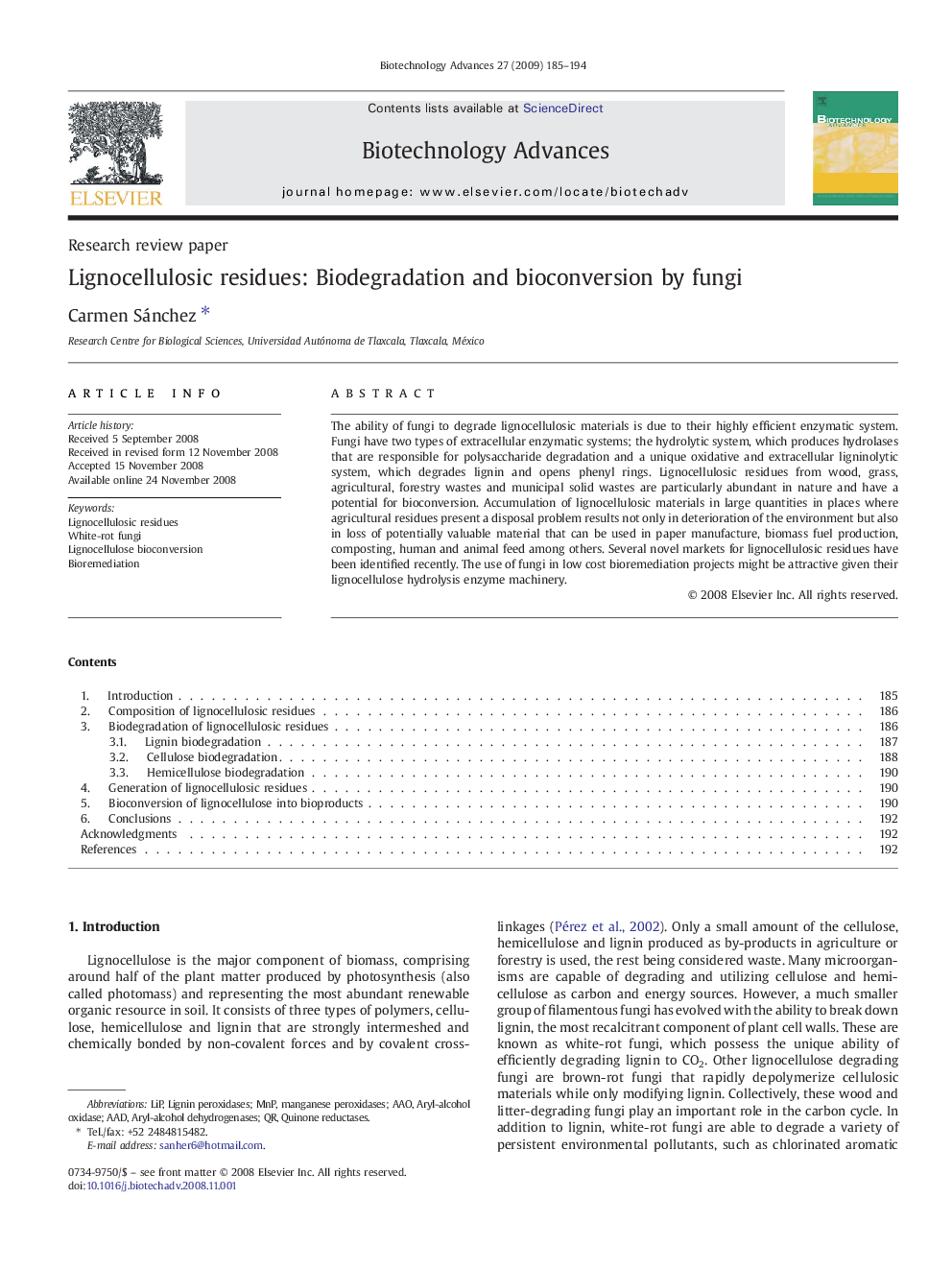| Article ID | Journal | Published Year | Pages | File Type |
|---|---|---|---|---|
| 14411 | Biotechnology Advances | 2009 | 10 Pages |
The ability of fungi to degrade lignocellulosic materials is due to their highly efficient enzymatic system. Fungi have two types of extracellular enzymatic systems; the hydrolytic system, which produces hydrolases that are responsible for polysaccharide degradation and a unique oxidative and extracellular ligninolytic system, which degrades lignin and opens phenyl rings. Lignocellulosic residues from wood, grass, agricultural, forestry wastes and municipal solid wastes are particularly abundant in nature and have a potential for bioconversion. Accumulation of lignocellulosic materials in large quantities in places where agricultural residues present a disposal problem results not only in deterioration of the environment but also in loss of potentially valuable material that can be used in paper manufacture, biomass fuel production, composting, human and animal feed among others. Several novel markets for lignocellulosic residues have been identified recently. The use of fungi in low cost bioremediation projects might be attractive given their lignocellulose hydrolysis enzyme machinery.
